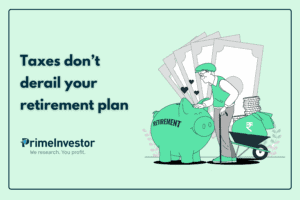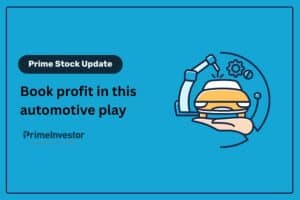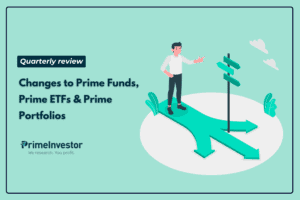With the Sensex hurtling past the 60,000-mark and showing few signs of slowing down, you may be getting increasingly jittery about stock markets. If that’s the case, this fund is not for you! But if you’re wondering where in this market to invest, then we have an option.

That option is the Sensex itself. Using the main market index in the large-cap space is a good route of going where the market does – i.e., you move with the market – without taking additional risks in terms of stock selection, active funds, or smaller market-cap stocks.
Before you ask, yes, the Nifty 50 index is also an equally good index to hold. We’re highlighting a Sensex index fund here for two reasons – one, it is an index that’s less talked about in passive investing and is lesser known. Two, index funds are the main way you can invest in the Sensex. Unlike the Nifty 50, ETF activity in the Sensex is poor.
Our recommendation here is HDFC Index Fund – Sensex Plan, listed under Equity Moderate: Passive Funds in Prime Funds.
Obviously, the Sensex itself needs no introduction. So, we’ll just stop at mentioning that the Sensex is the market bellwether index that is made up of the 30 largest stocks by free-float market capitalization. We’re not getting into a deeper explanation of the index itself, unlike other passive fund recommendations that involved other indices. If you wish to know more about the Sensex, you can read from this BSE FAQ on the Sensex.
Instead, we will focus on these points:
- Why the Sensex makes a good bet in the large-cap space
- Whether to go for the Sensex or the Nifty
- How you can use the Sensex in your portfolio
Why the Sensex – move with the market
Large-caps by definition involve the top 100 stocks by market capitalization. But given the far larger market caps of the top stocks, a smaller set of stocks make for the bulk of the weight in the large-cap universe. Among the best ways to capture market momentum is to simply go with a market-cap weighted index, as stocks that rally are automatically accorded higher weights. The Sensex, being a market-cap weighted index like the Nifty 50, therefore presents a good route to owning the large-cap stocks that are rallying.
In the active large-cap category, few funds are able to do better than either the Sensex or Nifty 50 (or even the Nifty 100) on a steady basis. This is certainly not new, and it is a topic we have discussed at length in earlier articles and in our own recommendations.
By and large, most large-cap active funds have underperformed the index across timeframes. For example, consider rolling 1-year returns over the past 5-year period. The average proportion of times large-cap funds beat the Sensex in this period was 51%; the best figure was 72%.
This return decline has been growing over the past few years. While performance bounced back in the recent rally, many funds have failed to hold on to the gains. Therefore, this steady underperformance is now taking a toll on longer-term fund performance as well. the chart below shows the 5-year returns of the large-cap fund category average against the Sensex TRI.
Of course, there still are steady outperformers in the large-cap category but they are few in number (we have them in Prime Funds). But barring these, the extent of outperformance in the category is dwindling. Here, the question also is whether the return, especially where the outperformance is narrow, is enough to compensate the higher costs involved in active funds.
More, the large-cap component of your portfolio is more or less meant to be unexciting – it provides the lower-volatile base on which you add mid-caps/small-caps or other aggressive funds to boost returns. With the declining returns, it’s debatable on whether much effort is needed to track and review large-cap funds in your portfolio.
Yes, when markets fall, your returns could fare worse than active funds that are able to keep downsides contained. But good downside containment alone is not a strong enough reason to stay with a fund if it cannot deliver on the upside or beat the benchmark in the long term.
The Sensex or the Nifty 50
The next question is whether the Nifty 50 makes a better option. Frankly, neither index is better than the other. Long-term returns of both indices are almost exactly the same. In the short term, there will be performance differentials.
The Sensex stocks make up about 85% of the Nifty 50’s weight. Should the smaller stocks gain quickly and sharply, the Nifty 50 can deliver higher. Similarly, if the top weights see steady upswings, the Sensex may beat the Nifty 50 as these stocks would have heavier weights in the Sensex. But over time, returns of both indices match each other. The table below shows the return deviation and average returns over different timeframes for the Sensex and the Nifty 50. The period considered spans January 2000 to date.
As you can see, the differential in the average returns of the two indices is minimal across timeframes. Either works as a large-cap investment. To put it in numbers, consider the average 10-year return in the table above. The difference works out to about Rs 6,600 per lakh invested. If you already are investing in the Nifty 50, there is no need to move over to the Sensex.
As explained at the start, we are highlighting the Sensex for an index fund because using the ETF route is harder. While there are about 9 ETFs that track the Sensex, few see any healthy trading. For example, the average daily traded value in the past 3 months in SBI Sensex ETF is about Rs 25 lakh, which is also the highest for Sensex ETFs. This figure pales compared to the few crores that top Nifty 50 ETFs trading volumes run into. This makes the index fund route as the better option as far as the Sensex goes.
How to use the Sensex
In your portfolio, there are several ways in which the Sensex fits.
- If you do not wish to actively manage your portfolio by keeping a careful watch on performance to exit underperformers, or take the risk of underperformance, passive funds like the Sensex are good fits.
- As a simple large-cap component, instead of active large-cap funds. You can use the Sensex alone if you have a smaller portfolio. Or, use the Sensex along with large-cap oriented funds from other categories such as flexicap, value or focused. Go for funds where the top holdings don’t share a heavy overlap with the top constituents of the Sensex.
- The Sensex also works as the base of your portfolio if you’re a passive-only investor. The Sensex is a simple, plain-vanilla, market cap index housing the biggest stocks. This balances well with the growing range of index types to choose from, that can add different elements to your portfolio. So get the large-cap index in place, and then layer on index options such as low volatility, momentum, alpha, sectors, or any other differentiated strategy.
- If you have a low-risk appetite or your portfolio is is predominantly meant for income generation (from SWPs) over a long period of time, the Sensex is an option for the limited equity component that you may wish to hold for some growth. Adding the index in measured allocations will add a little heft to returns, which debt may not offer. This is provided, of course, that you do not need the amount for at least 5-6 years.
- If markets are swiftly falling and you do not have a stock shortlist at hand to know which stock to buy as prices correct, an index like the Sensex is a great way to capture the market fall quickly.
The fund recommendation
For the Sensex, the fund we recommend is HDFC Index Fund – Sensex Plan. The fund sports among the lowest tracking errors compared to both Sensex-based as well as many Nifty 50 index funds. Tracking error is low across both short periods as well as longer-term periods.
The average 6-month expense ratio for HDFC Index Fund – Sensex works out to 0.18%. While this is marginally higher than some Nifty 50 and Sensex index funds, it is still well below the average for the category. Besides, its tracking error is still better than funds with lower expense ratios.
The fund’s AUM has steadily grown from just about Rs 500 crore two years ago to Rs 2,650 crore now. The fund is the largest for Sensex funds, with the next largest option, ICICI Prudential Sensex Index Fund far below at Rs 350 crore and Nippon India Index Fund – Sensex at Rs 200 crore.




8 thoughts on “Prime Recommendation: A fund to move with the market”
Dear Madam,
Recently i started investing with axis Nifty 100 index fund.
Would i stay invested or i need to change to HDFC index fund- sensex.
kindly suggest.
regards
Dayalan.J
No, please remain invested in Nifty 100. There is no need to move to Sensex. The Nifty 100 is an equally good index to hold the large-cap universe; the Nifty 100 and the Nifty 50 move very similar to each other because the Nifty 50 accounts for the majority weight in the Nifty 100. – thanks, Bhavana
Dear Ms. Bhavana: Which is better – Index Fund or equivalent Index-based ETF (I have a Demat account) in terms of long-term performance? Thanks!
We have discussed the index fund-ETF question here: https://www.primeinvestor.in/should-you-go-for-index-funds-or-etfs/ – thanks, Bhavana
How about HDFC Nifty 50, I am having Nifty 50 fund, and should I shift to Sensex, Is it a big divergence you see between Sensex and Nift ETF of HDFC
As explained in the article, there is no need to shift from Nifty 50 to Sensex. Either index is fine to invest. – thanks, Bhavana
Isn’t the market run up hence the margin of safety is limited? Sensex can correct ? Is it wise to invest at these levels?
Yes, the Sensex can correct. But if markets correct, so will other funds and stocks. You can either stay away from the equity market altogether or invest in an index that will take you where the market goes – if you do not want the risks in an active fund. As explained, most large-cap active funds are not really market-beating options. Of course, making lumpsum investments at these times is not a good idea unless they are very small amounts compared to your portfolio – invest through SIPs or make multiple lumpsum investments, and keep some amount as liquid/cash to catch markets if they correct. – thanks, Bhavana
Comments are closed.